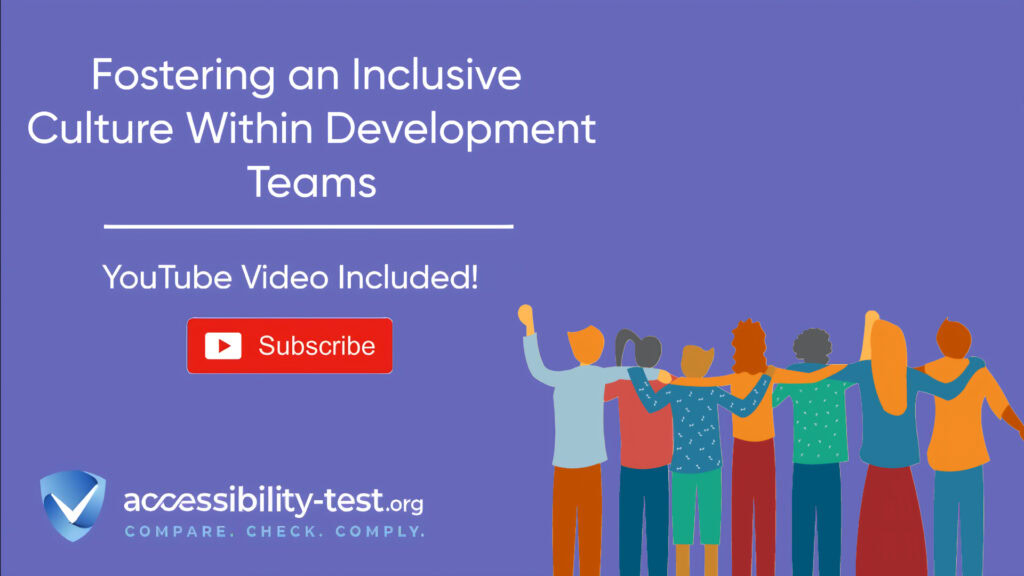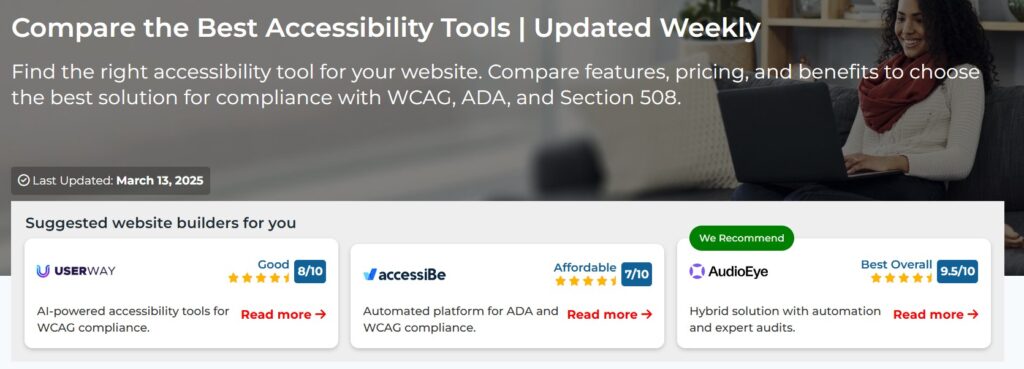
Creating development teams where everyone feels valued leads to better digital products that work for all users. When team members from different backgrounds work together, they bring unique perspectives that help catch accessibility issues that might otherwise be missed. This article explores how building inclusive development teams directly improves website accessibility outcomes, provides practical training approaches for WCAG standards, and offers strategies for better collaboration between designers, developers, and testers.
Why Inclusivity Matters for Better Accessibility Outcomes
An inclusive development team is one where people with different backgrounds, abilities, and perspectives feel welcomed and valued. When teams include people with diverse experiences, the products they create naturally become more accessible to a wider range of users.
Research consistently shows that diverse teams perform better. According to studies, teams with varied backgrounds and perspectives generate more creative solutions and better products that serve a broader audience. This is especially important when creating websites and applications that need to work for everyone, including people with disabilities.
“Having a diverse team isn’t enough – boosting diversity numbers does not automatically create an inclusive culture,” notes research from Qualtrics. True inclusivity requires ongoing effort and commitment from leadership to create an environment where team members feel safe sharing their thoughts and perspectives.
How Inclusive Teams Create More Accessible Products
Inclusive development teams naturally build more accessible products because:
- They consider a wider range of user needs from the beginning of projects
- They question assumptions about how people use technology
- They bring first-hand experience with different abilities and assistive technologies
- They advocate for accessibility throughout the development process
- They identify potential barriers that others might overlook
For example, a team member who uses a screen reader can immediately identify navigation issues that might be missed by other developers. Similarly, someone with color blindness can catch color contrast problems early in the design phase.
Real-World Benefits of Inclusive Development Teams
When development teams include people with different perspectives, the benefits extend beyond the products they create. Inclusive teams typically experience:
- Higher employee satisfaction and retention rates
- Better problem-solving capabilities
- More innovative solutions to complex challenges
- Stronger connections with diverse user bases
- Fewer costly fixes after launch
- Better compliance with accessibility standards like WCAG and ADA
One significant advantage is that inclusive teams are more likely to catch accessibility issues early in the development process, when they’re much less expensive to fix. This can save organizations substantial time and money while delivering better experiences for all users.
Training Developers on WCAG Principles and ARIA Standards
For developers to create truly accessible websites, they need to understand the Web Content Accessibility Guidelines (WCAG) and Accessible Rich Internet Applications (ARIA) standards. These guidelines provide a framework for making web content more accessible to people with disabilities.
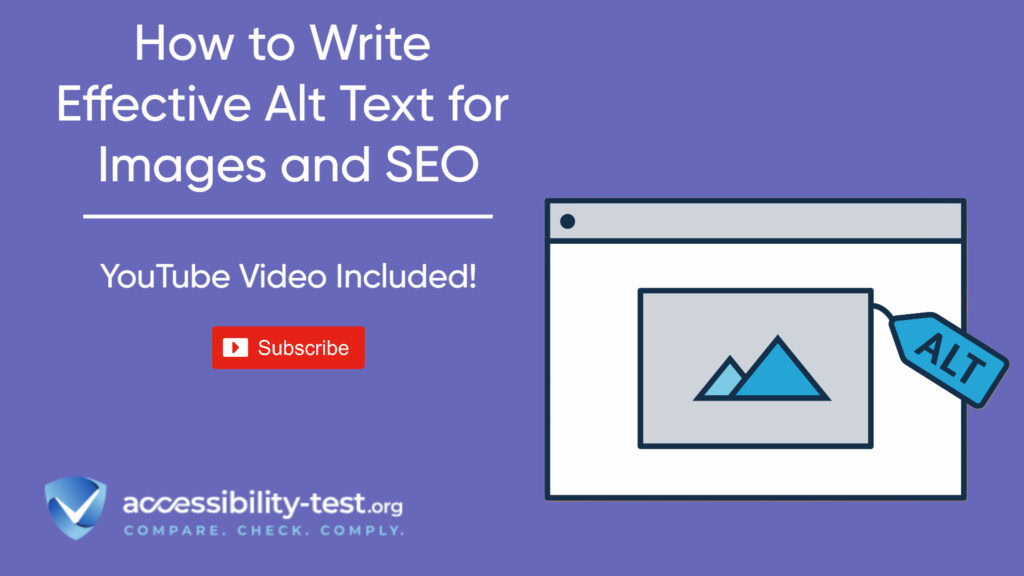
Making WCAG Training Effective for Development Teams
WCAG training should be practical and focused on real-world applications. Instead of teaching developers individual success criteria in isolation, organize training by common development tasks. For example:
- How to properly structure HTML for forms and navigation
- Creating accessible data tables using proper markup
- Writing effective alt text for images
- Ensuring keyboard accessibility for interactive elements
- Implementing proper focus states and tab order
This approach makes the guidelines more immediately useful and easier to apply in daily work. As noted in the AccessibilityOz training outline, “We train developers by category (such as forms) instead of focusing on relevant success criteria. This takes a lot of the complexity out of WCAG2 and provides trainees with immediately usable techniques, code and examples”.
Real-World Benefits of Modern Screen Readers
The 2025 updates to screen readers have real impacts on users’ lives:
- Faster navigation through websites and documents
- Better understanding of images and visual content
- More natural interaction with complex web applications
- Easier use of online shopping, banking, and government services
- Better access to social media and communication platforms
These improvements mean that people who are blind or have low vision can access more online content independently, without needing help from others.
Essential WCAG Principles Every Developer Should Know
While the complete WCAG guidelines are extensive, certain principles form the foundation of accessible development:
- Perceivable: Information must be presentable to users in ways they can perceive. This means providing text alternatives for non-text content and creating content that can be presented in different ways without losing information.
- Operable: User interface components must be operable by all users. Navigation must be keyboard accessible, and users must have enough time to read and use content.
- Understandable: Information and operation of the user interface must be understandable. Text should be readable, and functionality should be predictable.
- Robust: Content must be robust enough to be interpreted reliably by a wide variety of user agents, including assistive technologies.
Training should emphasize these core principles while providing specific coding techniques for implementation.
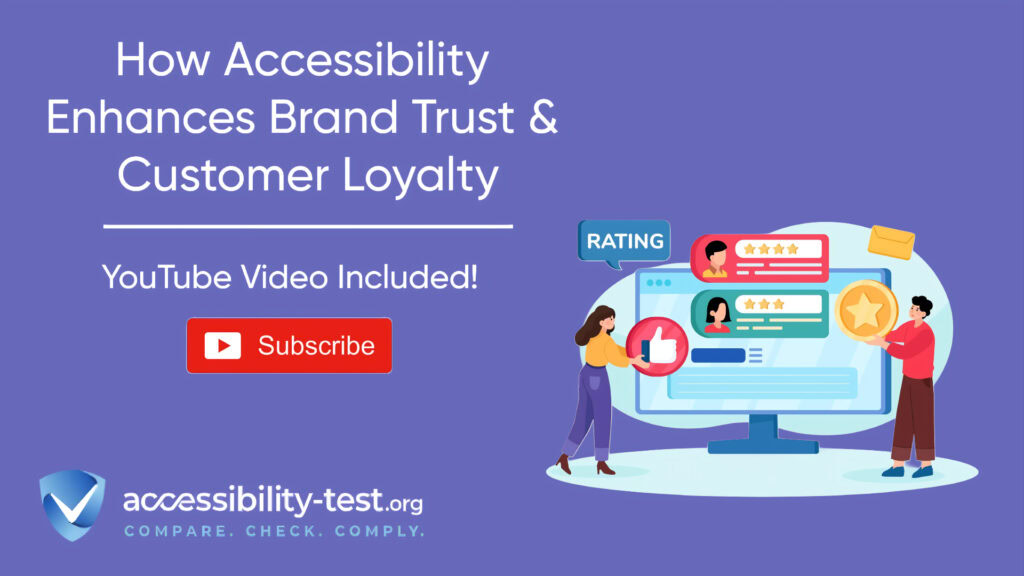
Practical ARIA Implementation
ARIA (Accessible Rich Internet Applications) helps make dynamic web content more accessible. Key areas for training include:
- Using ARIA landmarks to identify regions of a page
- Implementing ARIA roles to define element purposes
- Adding ARIA states and properties to convey dynamic changes
- Understanding when ARIA is needed and when native HTML elements are better
Developers should learn that the first rule of ARIA is not to use it when native HTML elements can provide the needed functionality. As a best practice, use semantic HTML whenever possible and supplement with ARIA only when necessary.
Continuous Learning and Assessment
Accessibility standards evolve over time. The recent update to WCAG 2.2 added new success criteria that developers need to understand. Creating a culture of continuous learning ensures teams stay current with best practices.
Consider implementing:
- Regular accessibility knowledge-sharing sessions
- Code reviews focused on accessibility
- Internal accessibility champions who mentor others
- Recognition for team members who improve accessibility
Assessment should focus on practical application rather than memorization of guidelines. Have developers demonstrate their ability to identify and fix accessibility issues in real code.
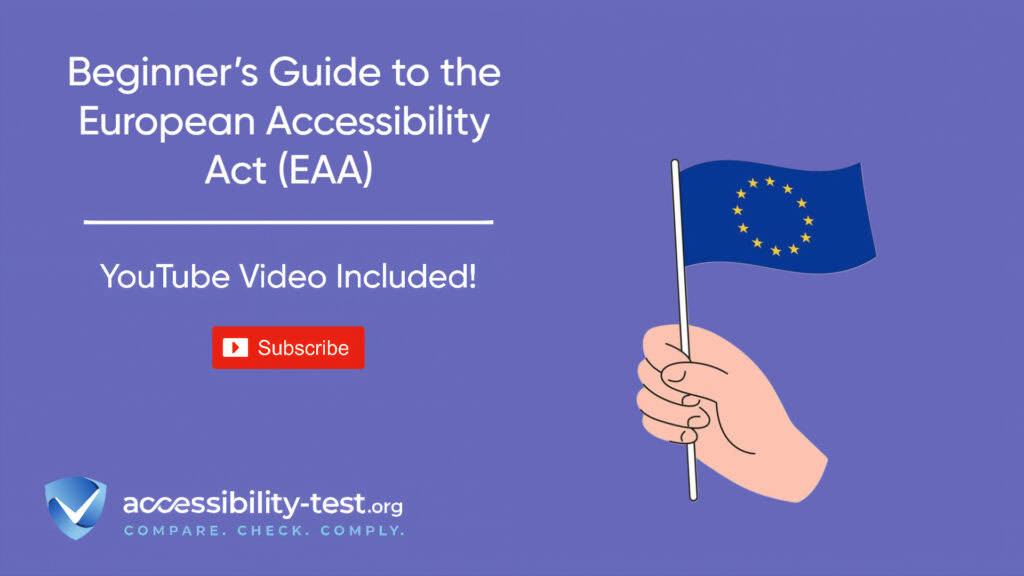
Encouraging Collaboration Between Designers, Developers, and QA Teams
Building accessible websites requires close collaboration between all team members involved in the creation process. When designers, developers, and quality assurance (QA) testers work in isolation, accessibility issues often slip through the cracks.
Breaking Down Silos Between Different Roles
Effective collaboration starts with breaking down the traditional silos between different roles:
Create shared accessibility responsibilities: Make accessibility everyone’s job rather than assigning it to a single person or team. Each role should understand how they contribute to the overall accessibility of the product.
Establish clear communication channels: Create regular opportunities for designers, developers, and QA testers to share insights and address challenges together. This could include daily standups, design reviews, or dedicated Slack channels for accessibility discussions.
Involve QA in design and development phases: QA testers should be involved from the beginning of projects rather than just during the testing phase. This early involvement helps identify potential accessibility issues before they’re built into the product.
Include developers in design reviews: When developers participate in design reviews, they can provide input on technical feasibility and identify potential accessibility challenges early in the process.
Tools and Processes That Support Collaboration
Several tools and processes can facilitate better collaboration around accessibility:
- Shared design systems with built-in accessibility considerations
- Integrated development environments that support accessibility testing
- Collaborative documentation of accessibility requirements and solutions
- Accessibility checklists specific to each role
- Cross-functional accessibility reviews at key project milestones
For example, designers might use tools that check color contrast as they work, developers might use linting tools that flag accessibility issues in code, and QA testers might use screen readers and keyboard-only navigation to verify accessibility.
Overcoming Common Collaboration Challenges
Teams often face challenges when trying to collaborate on accessibility:
Testing challenges: Testing for accessibility requires specific expertise and tools. Invest in proper training and tools for all team members involved in testing.ine worlds.
Different knowledge levels: Team members may have varying levels of accessibility knowledge. Address this through targeted training and by creating accessibility champions who can mentor others.
Competing priorities: When deadlines loom, accessibility can get deprioritized. Combat this by integrating accessibility into your definition of “done” and making it a non-negotiable requirement.
Lack of clear ownership: Without clear responsibility assignments, accessibility tasks can fall through the cracks. Create a RACI matrix (Responsible, Accountable, Consulted, Informed) for accessibility tasks to ensure nothing is missed.
Cross-Functional Training and Empathy Building
Cross-functional training helps team members understand the challenges and workflows of other roles, fostering empathy and improving collaboration. Consider:
- Pair programming sessions between developers and QA testers
- Design workshops where developers can learn the basics of accessible design
- Accessibility simulation exercises where team members experience using assistive technologies
“Cross-functional training can help team members understand the challenges and workflows of other roles. This understanding can foster empathy and efficiency in workflow integration”.
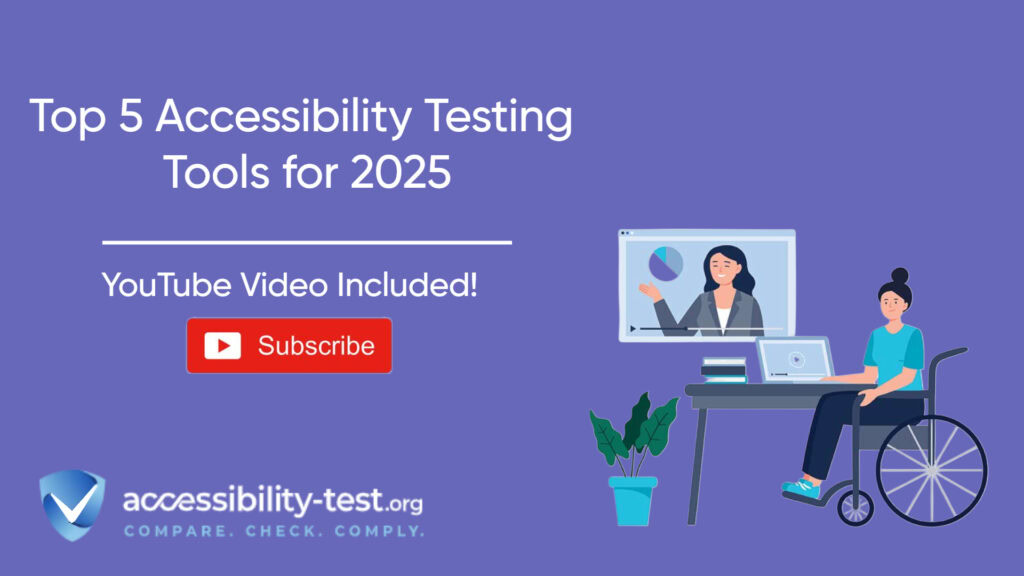
Creating Accessible Development Environments
For teams to truly understand accessibility, they should experience it firsthand in their own work environments. Creating accessible development environments benefits team members with disabilities while also building empathy and awareness among all team members.
Visit Our Tools Comparison Page!

Physical Workplace Accessibility
Physical accessibility considerations include:
- Adjustable height desks for those who need to stand or use wheelchairs
- Ergonomic chairs and equipment to accommodate different physical needs
- Clear pathways for wheelchair users
- Good lighting for those with visual impairments
- Quiet spaces for those who are sensitive to noise
- Accessible meeting rooms with appropriate technology
Making these accommodations demonstrates a commitment to inclusion that extends beyond the digital products your team creates.
Digital Workplace Accessibility
The tools developers use should also be accessible:
- Choose development tools and platforms that work well with assistive technologies
- Configure IDE (Integrated Development Environment) settings to improve readability
- Ensure internal documentation is accessible
- Select communication tools that support keyboard navigation and screen readers
- Provide alternatives for visual information shared in team communications
When developers experience accessibility barriers in their own tools, they gain a deeper understanding of why accessibility matters in the products they build.
Inclusive Meeting Practices
Team meetings should model inclusive practices:
- Share materials in advance and in accessible formats
- Describe visual content for those who cannot see it
- Ensure only one person speaks at a time
- Provide real-time captioning for video meetings when needed
- Record meetings for those who process information better with repeated exposure
- Accommodate different communication styles and preferences
These practices not only make meetings more accessible but also improve communication and participation for everyone.
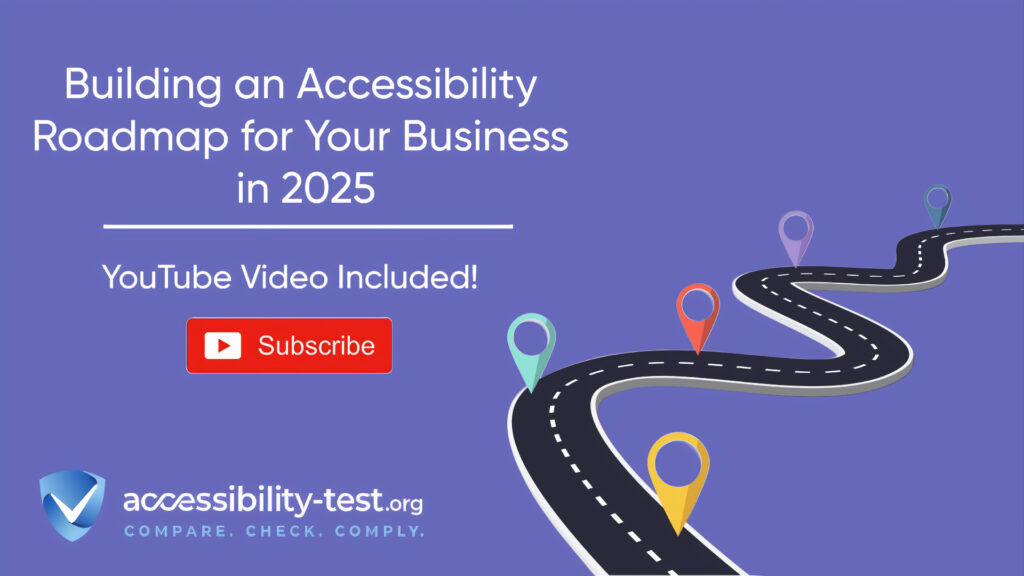
Building Accessibility Into Your Development Workflow
Accessibility is most effective when integrated throughout the development process rather than treated as a separate task or afterthought.
Integrating Accessibility at Every Stage
Here’s how accessibility can be incorporated at each stage of development:
- Planning: Include accessibility requirements in user stories and acceptance criteria. For example, “As a screen reader user, I need to navigate the form using only my keyboard.”
- Design: Create wireframes and mockups that address accessibility concerns such as color contrast, text size, and focus states. Use tools that check accessibility during the design phase.
- Development: Write code that follows accessibility best practices from the start. Implement proper semantic HTML, manage focus, and ensure keyboard navigability.
- Testing: Conduct both automated and manual accessibility testing throughout development, not just at the end. Use tools like accessibility checkers and screen readers to verify accessibility.
- Deployment: Include accessibility checks in your deployment pipeline to prevent inaccessible features from reaching production.
- Maintenance: Continuously monitor and improve accessibility as you add new features or make changes.
Accessibility Testing Approaches
Effective accessibility testing combines several approaches:
- Automated testing: Tools like accessibility scanners can quickly identify many common issues such as missing alt text, improper heading structure, or insufficient color contrast. While these tools can’t catch everything, they provide a good baseline assessment.
- Manual testing: Human testers check aspects that automated tools can’t evaluate effectively, such as whether alt text is meaningful or if the logical flow makes sense.
- Assistive technology testing: Testing with actual assistive technologies like screen readers, screen magnifiers, or voice recognition software reveals how real users will experience your site.
- User testing with people with disabilities: Nothing replaces testing with actual users who have disabilities. Their feedback provides insights that technical testing alone cannot provide.
A combination of these approaches provides the most thorough assessment of your site’s accessibility.
Documentation and Knowledge Sharing
Good documentation helps maintain accessibility standards across projects and team changes:
- Create internal accessibility guidelines specific to your products
- Document common accessibility solutions for reference
- Share lessons learned from accessibility successes and failures
- Maintain a library of accessible components and patterns
- Record the reasoning behind accessibility decisions
This documentation becomes especially valuable when onboarding new team members or when faced with accessibility questions in future projects.
Measuring Success and Continuous Improvement
Like any important initiative, accessibility efforts need to be measured and continuously improved.
Key Performance Indicators for Accessibility
Consider tracking metrics such as:
- Percentage of WCAG success criteria met
- Number of accessibility issues identified in testing
- Time to resolve accessibility issues
- User satisfaction ratings from people with disabilities
- Reduction in accessibility-related customer support requests
- Progress on accessibility audits over time
These metrics help demonstrate the value of accessibility efforts and identify areas for improvement.
User Feedback Mechanisms
Create channels for users with disabilities to provide feedback on your products:
- Accessible feedback forms on your website
- User testing sessions with people with disabilities
- Partnerships with disability organizations
- Surveys designed to capture accessibility experiences
- Direct outreach to users who report accessibility issues
This feedback provides invaluable insights that technical testing alone cannot provide.
Regular Audits and Assessments
Schedule regular accessibility audits to ensure ongoing compliance:
- Internal audits: Conduct regular internal reviews using a combination of automated tools and manual testing.
- External audits: Periodically bring in external accessibility experts to provide an unbiased assessment of your products.
- Competitive benchmarking: Compare your products’ accessibility to competitors to identify opportunities for improvement.
- Standards compliance checks: Verify compliance with relevant accessibility standards such as WCAG 2.2, ADA requirements, and Section 508 regulations.
These assessments help identify gaps and prioritize accessibility improvements.
Run a FREE scan to check compliance and get recommendations to reduce risks of lawsuits
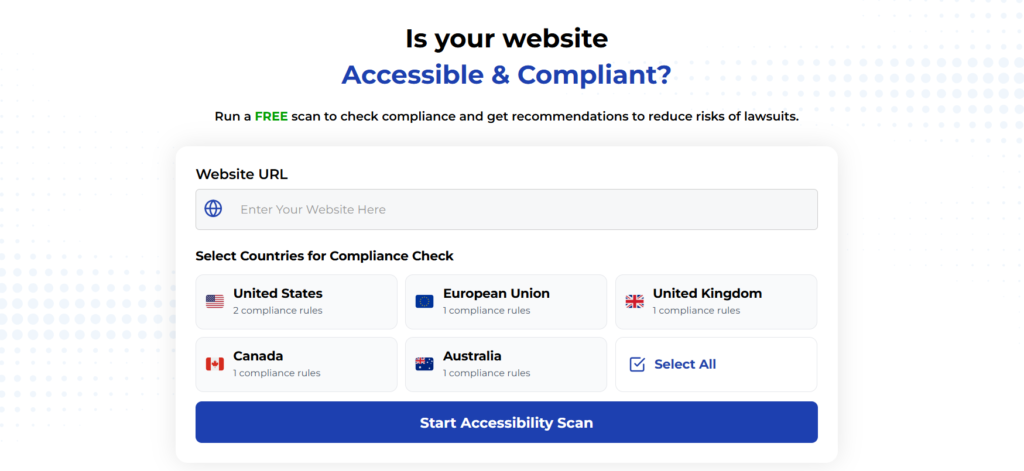
Creating truly accessible websites and applications requires both technical expertise and an inclusive culture. When development teams embrace diversity and inclusion, they naturally create more accessible products because they understand and value the diverse needs of all users.
The journey toward accessibility is ongoing. Standards evolve, technologies change, and our understanding of user needs deepens over time. By fostering an inclusive development culture, providing thorough accessibility training, and encouraging collaboration between all team members, organizations can create digital experiences that truly work for everyone.
Remember that accessibility is not just about compliance—it’s about creating products that provide equal access and opportunity for all users, regardless of their abilities or the way they interact with technology.
Run a FREE scan to check compliance and get recommendations to reduce risks of lawsuits.



